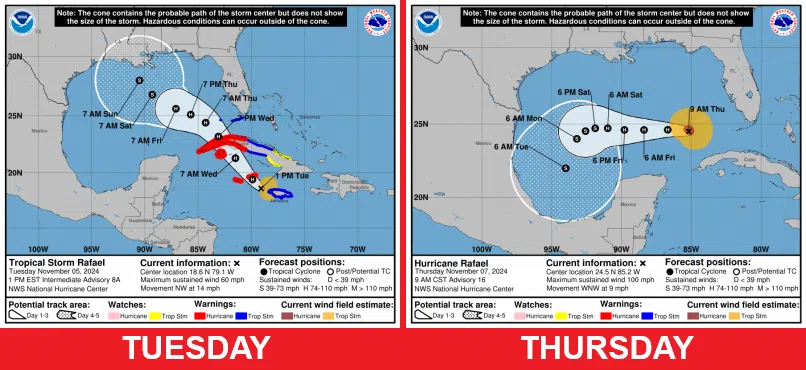
It looks like Louisiana’s record of never having a hurricane making landfall in the state in the month of November will remain intact, at least for the time being.
In fact, it looks like the entire United States is in the clear from Hurricane Rafael.
Earlier this week, the National Hurricane Center had Rafael turning north in the Gulf of Mexico and straight towards Louisiana, albeit weakening to below hurricane strength
But LSU Public Health Climatologist Barry Keim says the forecast track has done a complete 180, now headed towards the Bay of Campeche in Mexico.
“It’s basically going to stall,” says Keim. “And when the storm starts to stall, that basically tell you there’s either a blocking pattern or no steering currents whatsoever. In this case, apparently it’s no steering currents whatsoever.”
Keim says while forecast tracks are always subject to change, it’s highly unusual for a track to change as drastically as that of Rafael.
“This is in response to a mid-level ridge that’s coming in from the east, coming in from the Atlantic Ocean ridging its way into the Gulf of Mexico,” Keim says. “And that’s basically what’s stymied the northwestern track that was going to take this thing up toward Louisiana, and it’s nudging it more westerly, and eventually it’s going to nudge it southwesterly — we think.”
Keim says there’s still great uncertainty where the storm will ultimately go, if anywhere at all.
“It may just stall out there and eventually fizzle out,” Keim says, “because it’s encountering slightly cooler sea surface temperatures than what we had in the Caribbean, so it’s going to be a very slow decline in the intensity, and it’s also encountering greater windshear the deeper we get into this storm.”







Comments